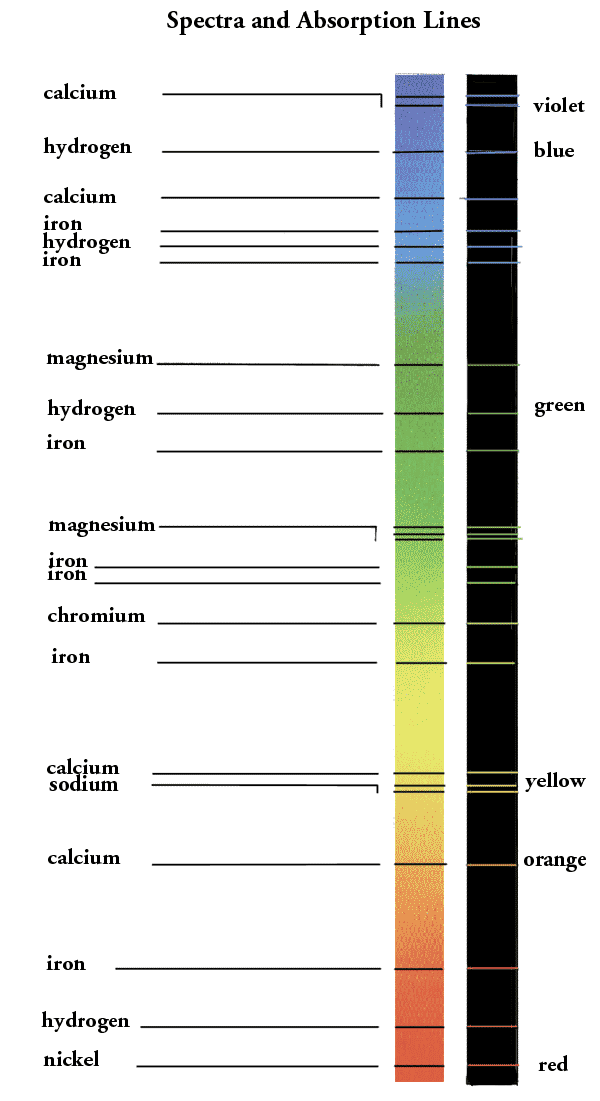| We
have examined the Rutherford Model, a picture from the earliest
parts of the 20th century. However, the Rutherford Model was
unable to explain certain phenomena from direct observation, namely,
why atoms radiate only certain frequencies of electromagnetic energy
and no others Only certain spectra
lines are seen.
Spectra
Lines are formed when light
is focused through a spectrum analyzer after being passed through
a slit. Spectra
and Absorption Lines
for the elements: hydrogen (H), iron (Fe), calcium (Ca),
nickel (Ni), magnesium (Mg), and Chromium (Cr) can be seen in
figure 1.1.7.
No two elements produce the same spectral pattern, much like a
fingerprint on a person is unique to that person. Notice
how the black absorption lines (when an atom gains energy) occur
at the same wavelengths as the emission lines (when an atom loses
energy). According to the Rutherford Model (classical physics),
an electron would lose energy and spiral into the nucleus as it
continuosly radiates its energy.

figure 1.1.7
The signature of
each atom is contained within its spectral graph or plot.
By placing an element within its gaseous state and using the spectrum
analyzer one can easily determine what element is present. Since
the Rutherford Model was unable to resolve the observations of
spectral lines, and called for the annihilation of the electron
as it spiraled into the nucleus, it had to be reassessed.
The
Danish Physicist, Niels Bohr brought us closer to our current
understanding of the atom. Bohr studied first with Thomson but
the two didn't get along well. Later, he met with Rutherford,
a man after whom he emulated his scientific life.
While studying the hydrogen atom, Bohr broke with classical physics
when he stated that:
 There are stationary states of energy for atoms
There are stationary states of energy for atoms
 There is a frequency condition for energy transfers in
atoms.
There is a frequency condition for energy transfers in
atoms.
 The electron's path is circular about the nucleus under
the coulomb force taking the
The electron's path is circular about the nucleus under
the coulomb force taking the
form:
where: q1
=
+1.60 x 10-19 Coulombs and
q2
=
-1.60 x 10-19 Coulombs.
These
ideas, revolutionary at the time, set forth the path for our present
understanding of quantum electrodynamics QED.
The first statement, there are stationary states of energy
for atoms means that an electron orbiting about its nucleus
(an atom of hydrogen), can exist without radiating any energy.
As stated before, according to the classical model this would
be impossible because the hydrogen electron, as it revolves around
the nucleus, would be constantly radiating energy which would
degrade its orbital status with each successive rotation and radiation,
hence colliding into the nucleus over time according to
the equations:
|